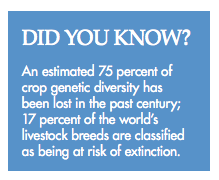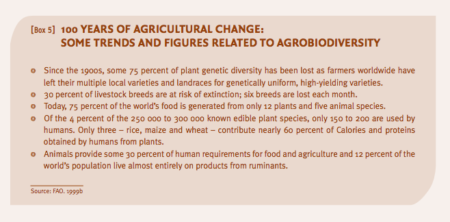A couple of things on the SDGs today for you to wade through.
 First, from FAO, there’s “FAO and the SDGs — Indicators: Measuring up to the 2030 Agenda for Sustainable Development.” There’s a lot of sensible stuff in there on how to measure progress towards the SDG targets, goal by goal. I’m afraid, however, it lost me with the little sidebar I reproduce here. No, I didn’t know that. Mainly because that first bit is not true.
First, from FAO, there’s “FAO and the SDGs — Indicators: Measuring up to the 2030 Agenda for Sustainable Development.” There’s a lot of sensible stuff in there on how to measure progress towards the SDG targets, goal by goal. I’m afraid, however, it lost me with the little sidebar I reproduce here. No, I didn’t know that. Mainly because that first bit is not true.
And then there’s an IIED Briefing on SDG2 in particular — that’s the hunger one. Surely they’ll stay away from dodgy numbers. Nope.
Genetic diversity reduces risk in agricultural systems and allows farmers to adapt to a changing environment, yet an estimated 75 per cent of crop diversity was lost between 1900 and 2000 with local varieties replaced by modern ones.
The reference? FAO’s training manual on Building on Gender, Agrobiodiversity and Local Knowledge. Where there is this:

But also this:
More than 90 percent of crop varieties have disappeared from farmers’ fields; half of the breeds of many domestic animals have been lost. In fisheries, all the world’s 17 main fishing grounds are now being fished at or above their sustainable limits, with many fish populations effectively becoming extinct. Loss of forest cover, coastal wetlands, other ‘wild’ uncultivated areas, and the destruction of the aquatic environment exacerbate the genetic erosion of agrobiodiversity.
Which is a bit confusing. The reference for that box? This. From 1999.
Oh well.